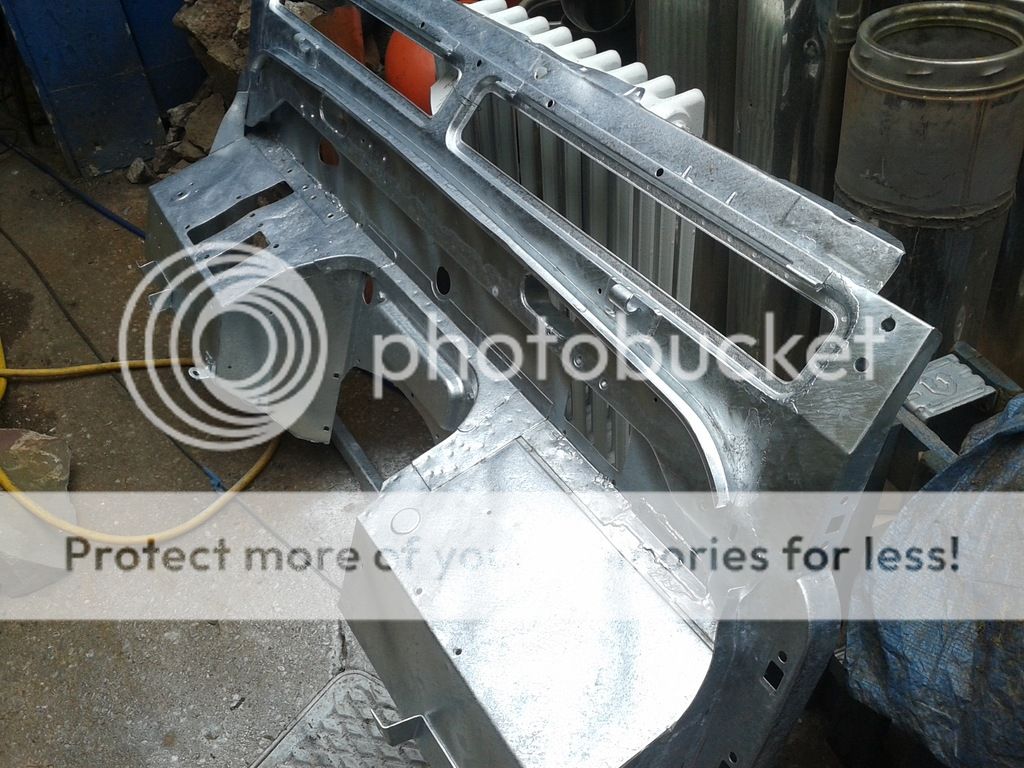A few more photos along the way,
After everything was removed, all that was left was a rolling chassis to push outside and remove the axles for refurb.
Old shocks and turrets fitted to aid centralising the front axle. TerraFirma set up going on soon
I had problems at this stage as the panhard rod would not fit at all ! With no weight on the project the springs at full stretch meant the geometry of everything was wrong. I had to hope that as she was built up that all would be well. This was exactly what happened later on.
Rear axle was overhauled with new half shafts, bearings and seals. Then given a coat of paint before hubs were built up with new calipers and discs etc
About this time the bulkhead I'd sourced had returned from galvanising and painting. Top tips here are, remove fly screens before galvanising, pack the wing vent hinge tubes with something easy to drill out before galvanising. I neglected to do this and ended up brazing a drill bit onto a long rod and then spent a whole day drilling out these tubes with a hand brace.
Lots of threaded holes to tap out and clear out and finally panel sealer before painting especially above the rain gutter (under bonnet).
Above all else though, fit the newly galvanised bulkhead to the chassis and check alignment ! These things do warp after galving and mine needed a bit of adjustment to get the outrigger bolts to fit smoothly, then once all else above has been seen to, send it for painting.
More to follow
Cheers
Chris


